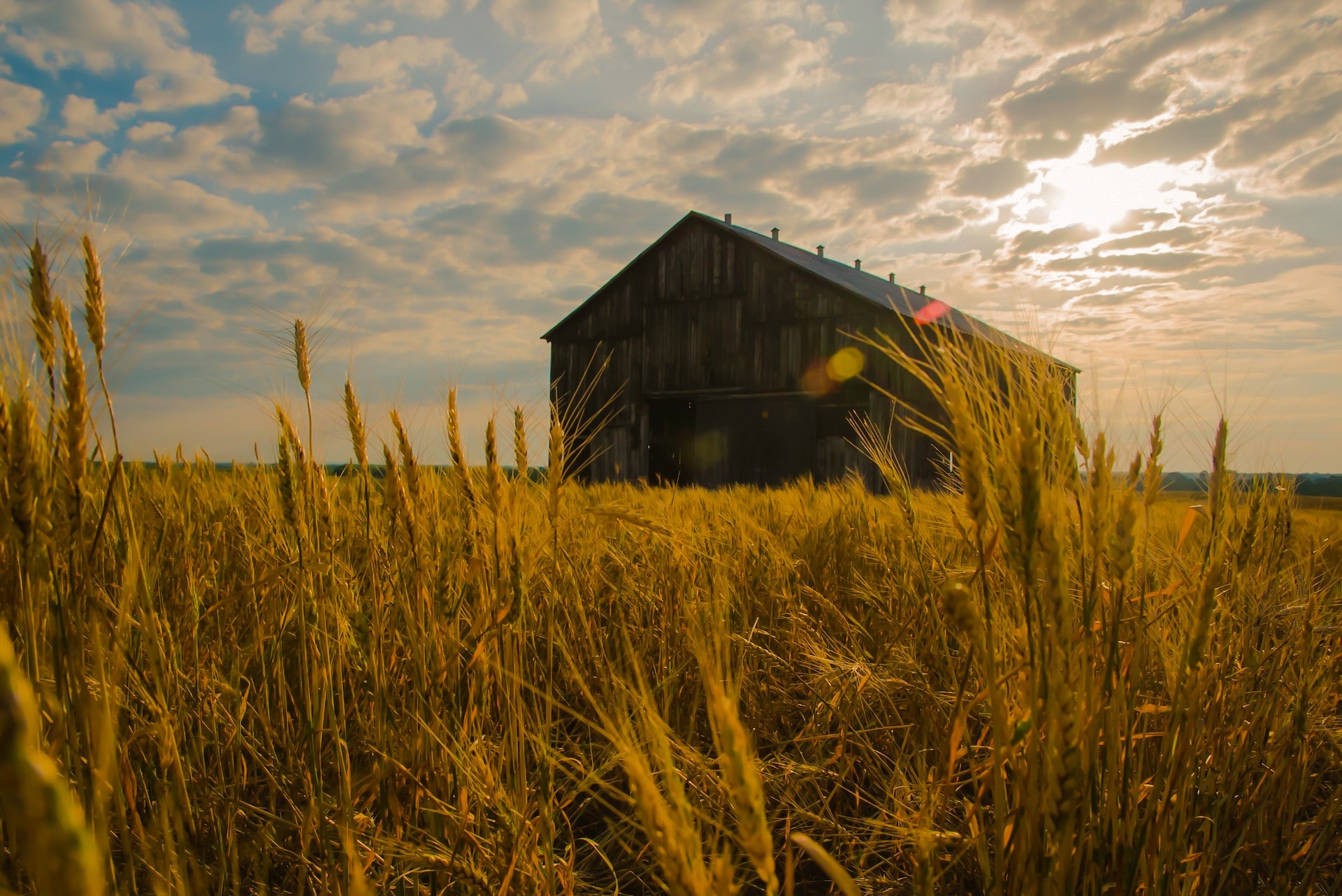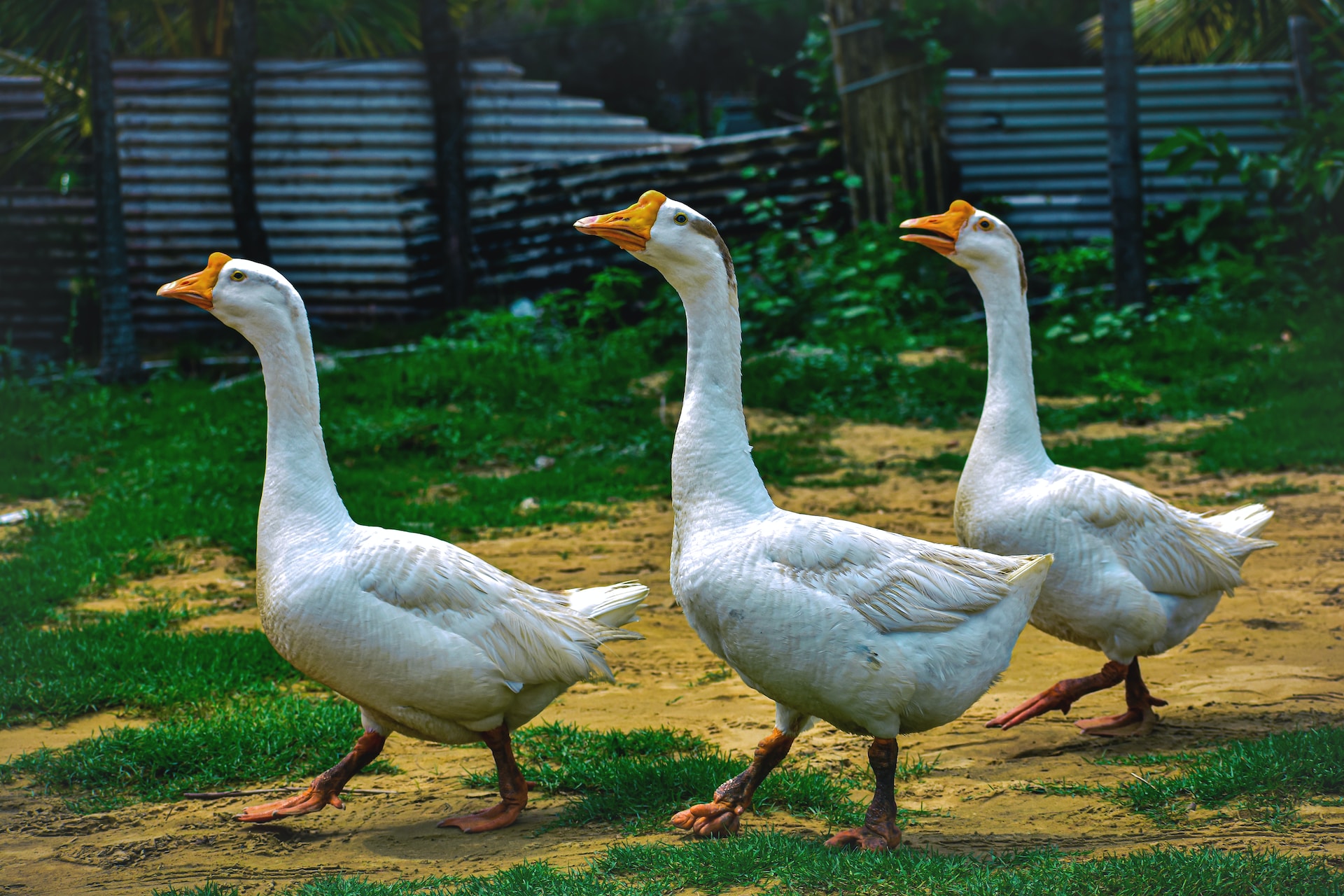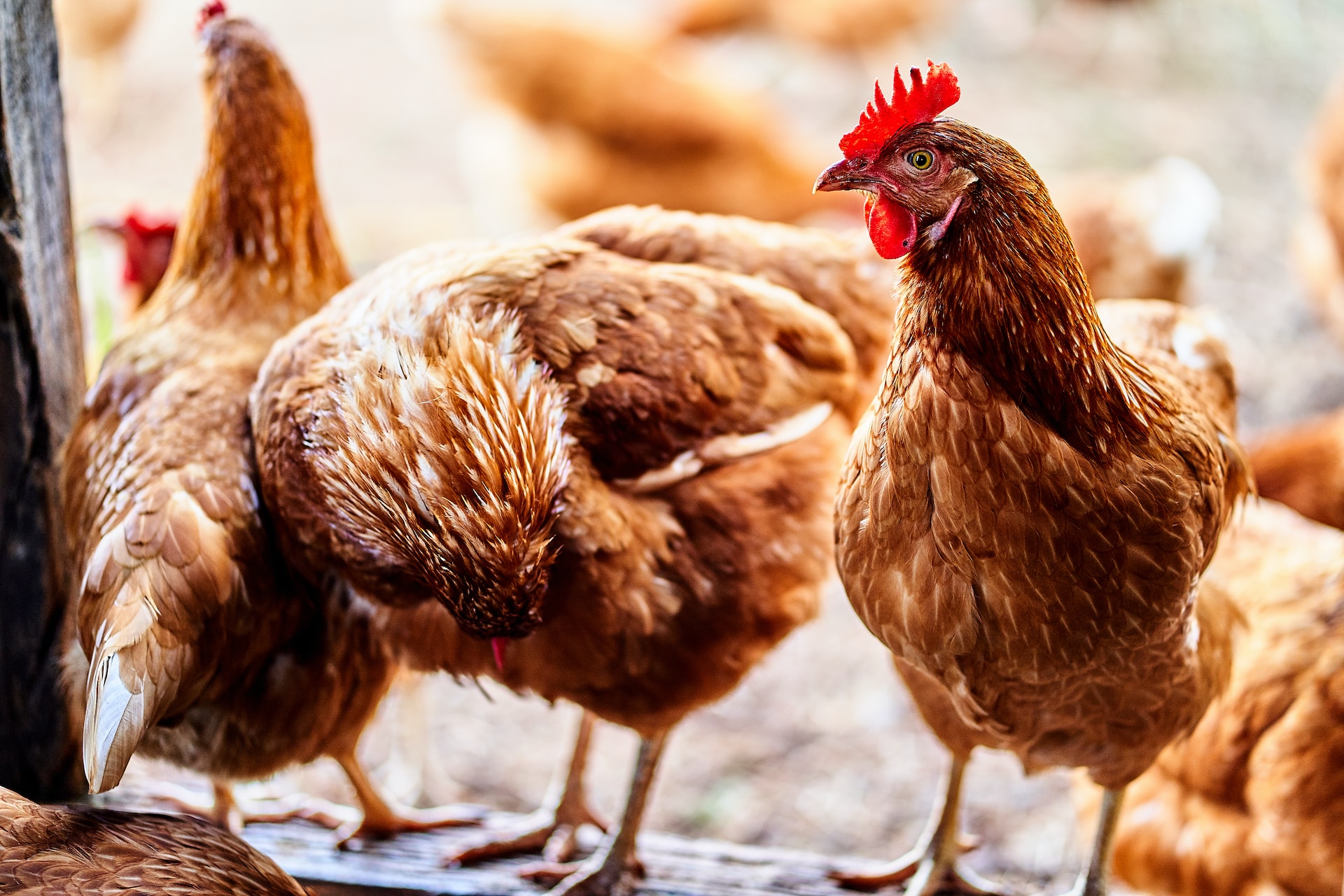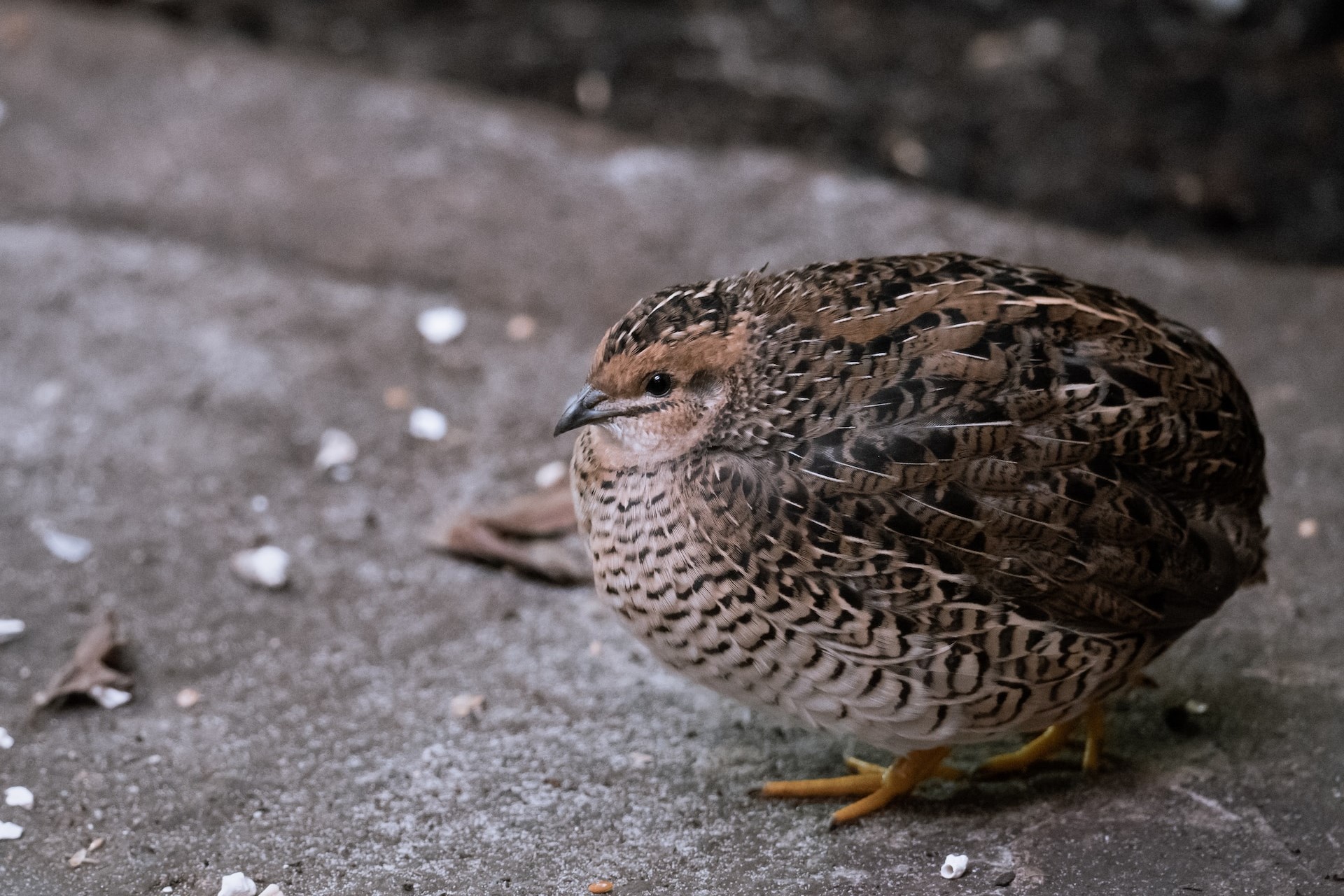
Low-Maintenance Farm Animals for Busy Backyard Farmers
We are reader-supported. When you buy through links on our site, we may earn affiliate commission.
Do you ever have a dream of running a homestead or being self-sufficient, but you just don’t have the time? Low-maintenance farm animals are the perfect solution. Here are some of the best options available.
Geese: Well-Rounded, Low-Maintenance Farm Animals

Although geese are notorious for being unusually cruel, they are fantastic farm animals. They can produce eggs, fertilizer, and meat. Best of all, weeding-eating, grass-trimming, and pest-grazing are their favorite hobbies. They don’t tear up lawns like chickens do, so it’s okay to let them roam.
Most people assume geese are evil avians. In reality, they can be very affectionate and gentle when raised in captivity. A geese’s mean streak only comes out when a predator comes around — they know how to fight, so you don’t need to keep an eye on them. If anything, it’s the foxes and raccoons that should worry about getting attacked by a goose, not you.
What’s more, geese rarely get ill or injured as adults. Really, this is one of their best traits. After all, changing hay every few days is much easier than forcing a sick animal to eat antibiotics for a week. When it comes to maintaining well-being, a goose is one of the most low-maintenance farm animals you can find.
Generally, geese also need less shelter than other kinds of poultry. After all, you can usually spot wild species living next to whatever random body of water they come across. Since they don’t typically take flight, you can pen them in with a simple fence and let them wander.
Fish: Ideal for Busy Backyard Farmers

Many people don’t consider fish farming as an option, but fish are one of the most low-maintenance farm animals you can possibly get. Fish don’t need special shelter, supplies, toys, or treatment — you really just have to feed them. They consume around 2% of their body weight daily, so you only have to give them something to eat once or twice per day.
If you don’t have a natural water source, you can always make a man-made version with a hole, filter, and aerator. You can make things even easier by growing plants in your pond — a process known as aquaponics. Your fish eat the algae off of the roots, and the plants aerate the water, meaning you need to do even less work.
If you get specific species, your fish farm becomes even more low-maintenance. For example, catfish snack on pond pests, get along well with others, and eat very little, so they’re an ideal choice. Alternatively, carp adapt to most environments and can eat almost anything, meaning you don’t need to customize their environment or diet.
Once a fish passes away, you don’t even need to dispose of it — you can just keep it in the pond. It will act as a source of nutrients for the other critters living there. This process might seem gross, but that’s the circle of life for you. Besides, if you do things this way, you won’t have to deal with a burial.
Honeybees: Best Overall Low-Maintenance Farm Animals

If you’re not afraid of the occasional stinger, honeybees make a fantastic addition to any homestead or hobby farm. Since they’re hard workers and primarily self-sufficient, they’re one of the most low-maintenance farm animals. In fact, it only takes one hour per week to manage a bee colony.
Once you set up the hives, you essentially enter into observation and reaction mode — your maintenance routine is largely passive. For the first few weeks, it’s best to check in regularly to make sure your honeybees acclimate. Once they settle in, you only have to check on them every two weeks or so.
Actual beekeeping is easy once you get into a routine. In most cases, care is exceptionally simple. For instance, you can use twigs and pine needles in your bee smoker — no need to buy a specialty blend. Also, you only need to feed them plain sugar water when their natural food sources are scarce.
Eventually, you can collect free honey and beeswax. As a bonus, your colony will pollinate everything in sight. Out of all low-maintenance farm animals, honeybees are the best. While professional beekeeping can get very involved, you won’t need to do much work to keep a small colony thriving.
Chicken: Best for Beginner Backyard Farming

Chickens are pretty much the standard for low-maintenance farm animals. Once you set up a coop and make sure their ideal conditions are met, you don’t need to constantly monitor them. Admittedly, checking for and gathering eggs can be time-consuming. Still, poultry generally requires less care than larger species.
Besides, maintenance is pretty hands-off once the eggs are done hatching. Generally, chicks don’t need human care because the mother hens take over. Getting to experience the cuteness of baby chickens without having to raise them by hand is a win-win.
While backyard chickens typically eat commercial feed, they can also eat kitchen scraps because they’re omnivores. If you want to supplement their pre-prepared pellet diet, you can toss in whatever fruit or vegetables you have left over.
Quail: Best for People in Urban Areas

Think of the quail like an unconventional chicken — it’s pretty much the same, except miniature. Although it requires more attention during the incubation and hatching period, it generally becomes low-maintenance when it reaches adulthood. If you don’t want to bother with the extra effort, consider raising them as chicks instead of from eggs.
Since quails are so tiny, you can even raise them indoors. You won’t wake up to obnoxious squawks or chirps in the middle of the night since they’re pretty quiet. As an added bonus, they don’t eat as much as other kinds of poultry because of their small size.
Quails are great low-maintenance farm animals, though they’re more fragile than other kinds of poultry. Even though you won’t handle them often, you’ll need to be gentle and tender when you do. Since you can get high-value eggs and meat from quails, they’re well worth this extra effort.
Ducks: Ideal for People in the Country

Ducks require some pretty specific living conditions upfront, but they’re pretty self-sufficient in the right environment. Generally, you only need a pond — or a man-made water source — and a netted area. If you lack space, a small swimming pool and a large coop will do. If you live out in the country, you can even keep them free-range.
Although you could technically raise ducks with a kiddie pool and a small coop, they need space to spread their wings. They’ll be much happier if they have a good stretch of land to live on. Besides, animals produce higher-quality meat when they’re raised humanely.
Ducks offer eggs, meat, and fertilizer. Beyond that, some species even like to snack on weeds. Most domestic kinds are very affectionate and beginner-friendly, making them one of the best low-maintenance farm animals for people who are just starting out.
Generally, ducks require very little maintenance. Besides feeding them and occasionally collecting eggs, they don’t require constant attention or special care. For instance, you can even mix their regular feed with certain kitchen scraps.
Research Your Low-Maintenance Farm Animals
Even the most low-maintenance farm animals require upfront research. While every animal on this list needs minimal care, they’re still living creatures — each has specific diets, dislikes, and living conditions. Before getting any animal, make sure you thoroughly read up on how to properly care for them to make sure you give them the best quality of life.
Share on
Like what you read? Join other Environment.co readers!
Get the latest updates on our planet by subscribing to the Environment.co newsletter!
About the author
Maria Visser
Maria serves as the Assistant Editor of Environment.co. A true foodie and activist at heart, she loves covering topics ranging from veganism to off grid living.





